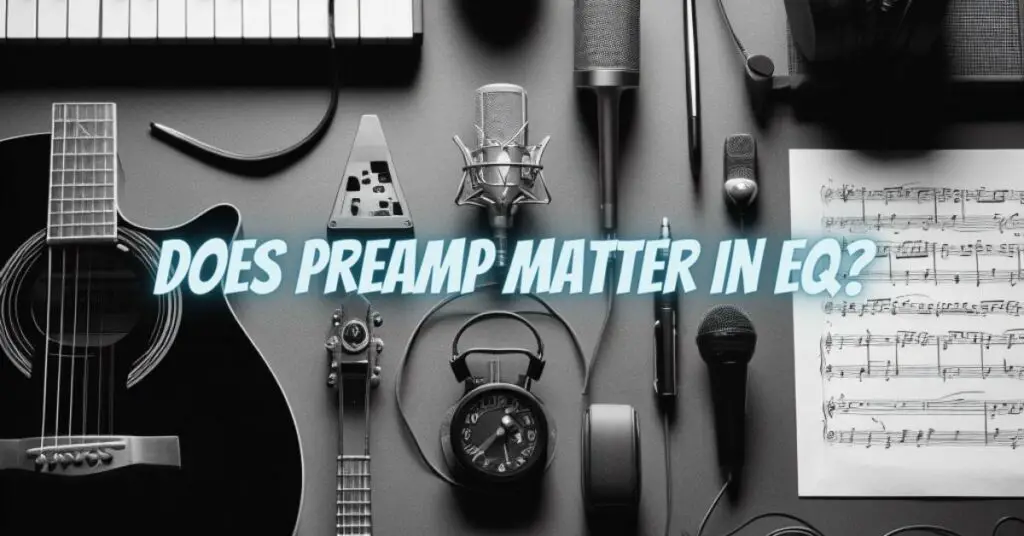In the intricate realm of audio engineering, equalization (EQ) stands as a powerful tool for sculpting the tonal landscape of music. By selectively boosting or attenuating specific frequency bands, EQ can transform the sonic character of instruments, vocals, and entire mixes. However, the effectiveness of EQ is often intertwined with the presence of a preamplifier, raising the question: Does a preamp matter in EQ?
The Role of Preamplifiers: Setting the Stage for EQ
A preamplifier serves as the first stage in the signal chain, amplifying the weak electrical signal from a microphone, instrument, or other source. This amplification process is crucial for ensuring that the signal is strong enough to drive subsequent stages, such as power amplifiers or recording equipment. However, the preamp’s influence extends beyond mere amplification; it also shapes the overall tonal character of the signal before it enters the EQ stage.
The Impact of Preamp EQ: Shaping the Foundation
Many preamps incorporate built-in EQ circuitry, allowing for basic tonal adjustments before the signal reaches the main EQ stage. These preamp EQ controls can play a significant role in shaping the foundation of the sound, particularly in live performance settings where quick tonal adjustments may be necessary. For instance, a preamp EQ can be used to boost or cut low frequencies to enhance the presence of a bass guitar or reduce boominess in a kick drum.
The Role of Main EQ: Refining the Tonal Palette
The main EQ stage, often located in a separate unit or incorporated into a mixing console, provides more comprehensive and precise control over the frequency spectrum. This EQ stage allows for more detailed sculpting of the sound, enabling the engineer to refine the tonal balance, address specific frequency issues, and achieve the desired sonic character.
The Interdependence of Preamp and Main EQ
While both preamp EQ and main EQ play crucial roles in shaping the overall sound, their relationship is not always straightforward. In some cases, the preamp EQ may be used to set a basic tonal foundation, with the main EQ providing more refined adjustments. In other instances, the preamp EQ may be bypassed altogether, allowing the main EQ to handle all tonal shaping tasks.
Factors Influencing the Importance of Preamp EQ
The importance of preamp EQ in the overall EQ process depends on several factors:
-
Genre and Style: In genres where a specific tonal character is desired, such as the warm, round tone of vintage tube amps in rock music, preamp EQ can play a significant role in establishing the initial tonal direction.
-
Personal Preferences: The engineer’s personal preferences and stylistic approach may influence the degree to which they rely on preamp EQ versus main EQ.
-
Signal Characteristics: The characteristics of the source signal itself can affect the importance of preamp EQ. For instance, a microphone with a naturally bright tone may require more preamp EQ adjustments to achieve a balanced sound.
The relationship between preamps and EQ is not a simple dichotomy of either/or; rather, it represents a collaborative effort in shaping the sonic landscape of music. A good understanding of how preamps and EQ interact allows audio engineers and musicians to make informed decisions about which tool to prioritize in a given situation. Whether relying on the preamp EQ for initial tonal shaping or utilizing the main EQ for more precise adjustments, both stages play a vital role in achieving the desired sonic outcome.


